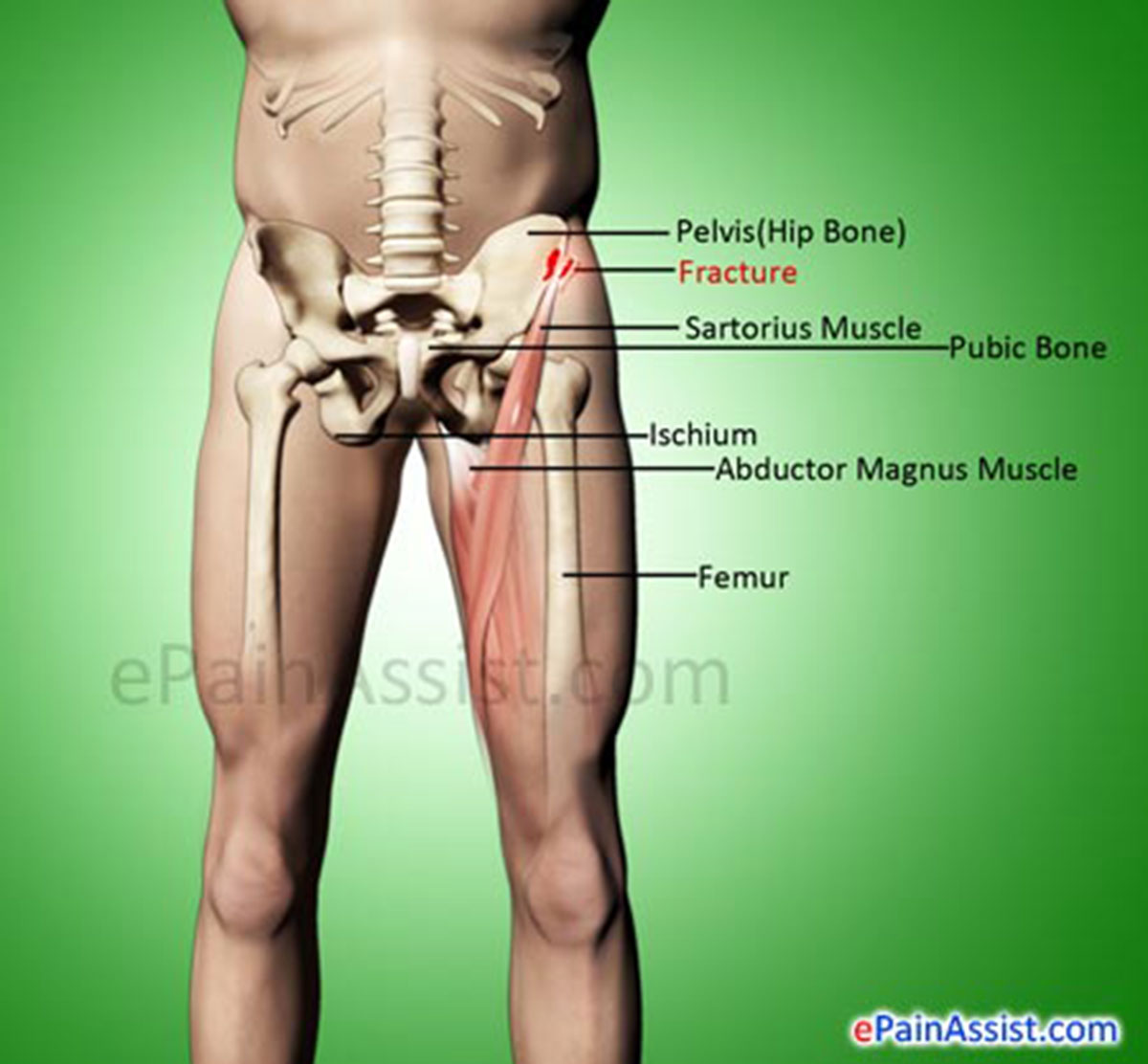What is Pelvis Avulsion Fracture?[1]
Pelvis is a ring-like structure of bones that is present at the lower end of the trunk. The pelvic bone is a large bone, which is present in two halves on each side of the body known as the hemipelvises, and together they build up the complete pelvis. The hemipelvis on each side consists of amalgamation of three bones called as the ilium, pubis and ischium. Ilium, pubis and ischium are three separate bones before puberty which are held together by cartilage. Eventually with growing age, these three bones fuse together into one single bone. Ligaments are strong connective tissues that connect the pelvis to the large triangular bone known as sacrum present at the base of the spine. This forms a bowl-like cavity under the rib cage.
Many muscles present in the thigh connect to different parts of the pelvis. An avulsion occurs when the part of the muscle body tears away from its connecting point. An avulsion fracture is a condition, in which a tendon that connects a bone to a muscle pulls away a part of the bone.

Avulsion fracture of the pelvis is a condition which occurs due to breaking and tearing away of the part bone of the pelvis. This occurs when a tendon or muscle that connects the bone suddenly tightens in such a way that it pulls off a part of the bone. A pelvis avulsion fracture occurs due to the strong muscular contraction that pulls away a piece of bone from its connecting point forcing the bone of the pelvis to break. This occurs very frequently at the ischial tuberosity the attaching point of the hamstrings or the AIIS at the front i.e. the attaching point of the rectus femoris.[2]
Avulsion fracture of the pelvis is common among individuals who perform activities and sports that involve speed and sudden stops such as long-jumpers, soccer players, sprinters and hurdlers.
Risk Factors and Causes of Pelvic Avulsion Fracture
Pelvic avulsion fracture is common among adolescents performing sports such as sprinting that involves changing movements rapidly and jumping such as soccer, track, hockey, and tennis.
- Individuals with tight muscles.
- Improper warm up and stretching prior to exercise.
- Athletes who perform activities or sports that are engaged with speed and sudden stops, such as long-jumping, sprinting, playing, soccer and hurdling.
- Trauma like car accidents.
- Overuse of the muscles of the hip.
- Bone problems such as bone infection or cancer.
Signs and Symptoms of Pelvic Avulsion Fracture[3]
- Sudden pain is experienced on performing activity, generally while performing a powerful movement.
- Pain may be experienced at the back side of the pelvis in the crease of the buttock.
- Pain may also be experienced at the front side of the hip where the bone can be felt.
- Tenderness in the pelvic area.
- Weakness with knee flexion and hip extension.
- Weakness with knee extension and hip flexion.
- Swelling and bruising in the affected area.

Treatment for Pelvic Avulsion Fracture[4]
- Avulsion fracture of the pelvis must be treated immediately.
- Pelvic avulsion fracture generally heals up on its own in about four to six weeks.
- Rest the affected area.
- Application of ice on a regular basis for about first two to three days to help in reducing inflammation and pain.
- Surgery is performed in very rare cases in order to re-attach the tendon and bone back to the pelvis. This is mainly done in severe cases where there is considerable displacement of the fracture.
- Commencement of gradual rehabilitation program followed by rest helps in regaining complete movement and strength at the hip.
Tests to Diagnose Pelvic Avulsion Fracture
A complete subjective, objective and physical examination is performed to diagnose pelvic avulsion fracture. Tests that help in assessing pelvic avulsion fracture may include:
- X-rays.
- Magnetic Resonance Imaging (MRI.)
- Bone scan.
- Computerized Tomography Scan (CT scan.)
Also Read:
